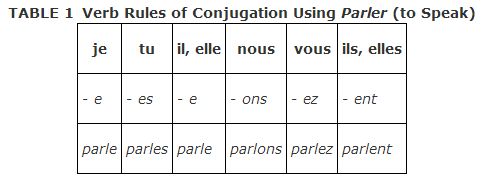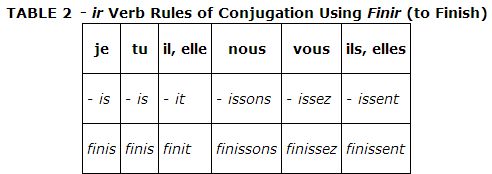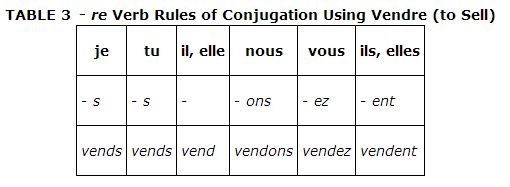In French, regular verbs are grouped into three main families — ‐ er, ‐ir, and ‐ re — because these are their endings in the infinitive form. Each regular verb within its respective family then follows the same rules of conjugation. If you memorize the pattern for one family, you know the pattern for all the verbs within the family. To form the present tense of ‐ er, ‐ ir, and ‐ re verbs, drop the infinitive ending (the final ‐ er, the final ‐ ir, or the final ‐ re) and add the endings for the subject pronouns indicated, as shown in Tables 1, 2, and 3.



Three exceptions to the ‐ re verb rule include rompre (to break), corrompre (to corrupt), and interrompre (to interrupt) — they end in ‐ t in the third person singular: il rompt, il corrompt, and il interrompt.
The present tense verb form expresses action: “I play,” “I do play” (do + verb), or “I am playing” (to be + verb). The verbs “to do” and “to be” are used only when they stand alone.